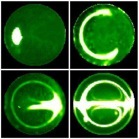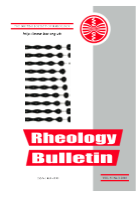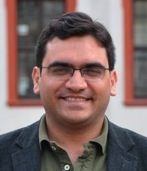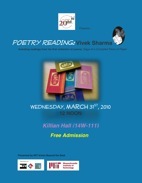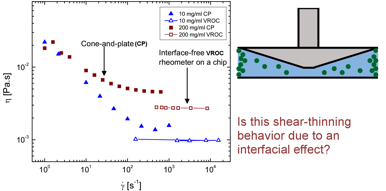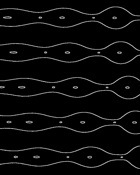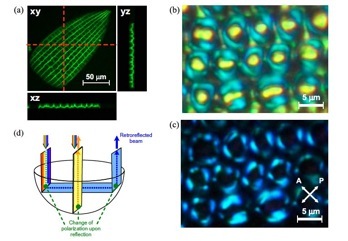Biography
I was born and raised in the Himachal Pradesh, a state in the Himalayas, India, where the path from my home to school was ‘uphill both ways’. I studied for two years in Chandigarh, followed by four years of undergraduate education at Indian Institute of Technology, Delhi. Thereafter I obtained an MS in Polymer Science from University of Akron, OH.
I conducted my doctoral research at Georgia Institute of Technology under the supervision of Mohan Srinivasarao (Professor, School of Materials Science and Engineering & School of Chemistry and Biochemistry). At Georgia Tech., I also spend over two years imaging chaotic mixing in microdroplets, under the guidance of Mike Schatz and Roman Grigoriev, (both are Assoc. Professor, School of Physics & Center for Nonlinear Sciences). The stint in Pattern Formation and Control Lab in School of Physics and in the groups that study nonlinear dynamics and chaos explains why I took Minor Areas in these two areas. I was also admitted into Chemical and Biochemical Engineering, and obtained an MS in Chemical Engineering from Georgia Institute of Technology.
I was supposedly procrastinating in the time spent in perfecting the art of Indian cooking, writing poetry, essays & fiction (led to publication of a book of poems, publication in several refereed journals and newspapers and subsequently poetry readings, including one organized by Artists Beyond Desks at MIT (see panel above)), playing ping-pong and in reading a lot of scientific and non-scientific literature.
Updated on July 21, 2011
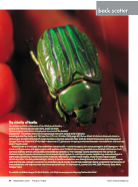
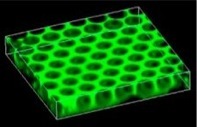
Vivek Sharma
Post-doctoral Research Associate, Hatsopoulos Microfluids Laboratory (HML)
Department of Mechanical Engineering, Massachusetts Institute of Technology
Address: 77 Massachusetts Ave, Bldg 3-249 Cambridge, MA 02139.
Email: viveks AT MIT.edu
RESEARCH INTERESTS: Soft Matter Optics, Dynamics, Elasticity & Self-Assembly
Experimental and theoretical aspects of shear, extensional and interfacial rheology, capillarity and wetting, jettability, spinnability, sprayability, self-assembly & optics of polymers, liquid crystals, colloids, proteins, biomaterials;
Droplet physics: breath figures, dew, clouds, fog, surface tension-driven flows.
Chemical & materials engineering – mass transfer, fluid mechanics, thermodynamics;
Inspiration or questions from nature & industry, especially energy applications & biophysics.
Current Research/ Dynamics of Complex Fluids using Shear, Extensional & Interfacial Rheology
Post-doctoral Research Associate, Hatsopoulos Microfluids Laboratory (HML). Sept 2008-
Supervisor: Gareth McKinley, Mechanical Eng, Massachusetts Institute of Technology, Cambridge MA..
Stringiness, jettability, sprayability & softness of complex fluids/ soft matter
I am investigating the effect of elasticity and extensibility on the surface tension driven instability and capillary break-up of viscoelastic jets. I study shear and extensional rheology of complex fluids, especially associative polymers and particle-filled systems, using conventional rheometers, microfluidic rheometry, interfacial rheometry and by the use of techniques and protocols that are being developed as a part of my ongoing research. Chief among these techniques is jetting-based rheometry (details: coming soon!).
The upper image in the left panel shows break-up of a weakly elastic jet.(Cover: BSR Rheology Bulletin, 2010 with Jim Serdy, Phil Thefrall-Holmes & Gareth McKinley).
The lower image shows PEO solution jet undergoing growth of instability: strobe based imaging gives microsecond resolution (Pacific Rim Conference Proceeding, with Arezoo Ardekani & Gareth McKinley)
The panel below shows the visualization of extensional deformation using birefringence at the stagnation point in a cross-slot device. (with Simon J. Haward & Jeff Odell, Soft Matter, 2011).
Apparent Yield stress and interfacial viscoelasticity of globular proteins and protein-surfactant mixtures
I am interested in the rheology of globular proteins and protein-surfactant mixtures, and interfacial viscosity and viscoelasticity of these mixtures.
The apparent yielding observed in bulk measurements is actually a manifestation of the interfacial viscoelasticity of a globular protein adsorbed at the liquid air-interface. (Graphical abstract, Soft Matter 2011, with Aditya Jaishankar, YC Wang & Gareth McKinley). We use a double wall ring (DWR) geometry attached to AR-G2 (a torsional rheometer) to separately measure interfacial viscoelasticity.
Graduate Research/ Patterns, optics & hydrodynamics in complex fluids/ soft matter
PhD Advisor: Mohan Srinivasarao, Materials Science & Eng, Georgia Institute of Technology, Atlanta, GA.
In graduate school, I worked in various domains and aspects of complex fluids or soft materials including dynamics and self-assembly of colloidal gold nanorods, slide ring gels, breath-figure-templated assembly of ordered arrays of pores in polymer films, iridescent beetles, chaotic mixing in microdroplets, negative intrinsic viscosity of polymer solutions (MS Thesis, Akron), and more.
The left image is of an iridescent beetle, Chrysina Gloriosa. We showed it is decorated by focal conic domains formed on free surface of cholesteric liquid crystal (Science: image is from a highlight published as Back Scatter, Physics Today, with Matija Crne, Jung Ok Park and Mohan Srinivasarao).
The image on the left illustrates our opto-microfluidics idea, where fluid transport and mixing is carried out using thermocapillary flows, and this particular image shows a dipole flow visualized using florescent particles (Lab on a Chip, with Mike Schatz and Roman Grigoriev).
The panel below shows a polymer film containing ordered arrays of pores formed by breath-figure-templated assembly (EPL, Soft Matter, with Lulu Song and Mohan Srinivasarao). The polymer film can be used for mimicking optical effects on Papilio Palinarus butterfly, as shown in panel on the right (EPL, with Matija Crne, Mohan Srinivasarao and group of Chris Summers)
The central panel highlights our work on colloidal gold nanorods, (image was on cover of Material Science and Eng. Reports (MSER)with K Park & Mohan Srinivasarao), topics include: Historical aspects of colloidal dispersions, with examples from colloidal gold, shape separation using centrifugation, plasmon resonance and optical properties, and self-assembly. We showed how to separate gold nanorods by understanding the shape-dependent hydrodynamics of gold nanoparticles (Proceedings of National Academy of Sciences (PNAS), with K Park and Mohan Srinivasarao) and how & when drying-mediated self-assembly of rodlike particles leads to liquid crystallinity (MSER)
EDUCATION
Doctor of Philosophy in Polymer Science and Engineering, with minor in Physics. 2003-2008
School of Materials Science & Engineering, Georgia Institute of Technology, Atlanta, GA
Master of Science in Chemical Eng, with minor in Nonlinear Dynamics & Chaos.; 2004-2006
Chemical and Biochemical Engineering, Georgia Institute of Technology, Atlanta, GA.
Master of Science in Polymer Science. 2001-2003
Department of Polymer Science, University of Akron OH
Bachelor of Technology in Textile Technology, with focus on Polymers & Fibers 1997-2001
Indian Institute of Technology (IIT) Delhi, Hauz Khas, New Delhi, India

